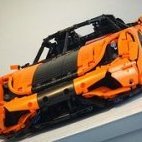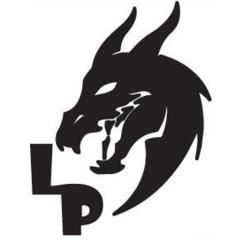Search the Community
Showing results for tags 'focus'.
Found 2 results
-

[MOC] Ford Focus RS 500
DugaldIC posted a topic in LEGO Technic, Mindstorms, Model Team and Scale Modeling
The Focus RS500 was launched in April 2010. A limited production run of 500 units (101 of them for Britain) were produced. It has a turbocharged 2.5 L5 petrol engine which produces 345 bhp and can do 0-62 mph in 5.4 seconds, with a top speed of 165 mph (266 km/h) making it the fastest Focus yet. Flickr Album: https://flic.kr/s/aHsmcw9qTe The new model was given the RS500 designation to highlight its strictly limited production run of 500 individually numbered vehicles, all of which were offered for customers to purchase. Each RS500 carries a metal plaque on the centre console, hand-engraved with a unique identification number from 001 to 500. Ford Focus RS by Dugald Cameron, on Flickr This is my rendition of the Ford Focus RS 500. This is a commission build and as such will not have any instructions. Ford Focus RS by Dugald Cameron, on Flickr This car is a full manual model and features a 6-speed manual gearbox tucked below the miniature inline 5 cylinder, fully adjustable seats, fold flat rear seats, adjustable steering wheel, open-able hood, trunk and doors, closed loop pneumatic e-brake, custom cantilevered suspension with reverse ackerman steering, HOG steering with working steering wheel, spare tire, 4x PF lights at front, 2 PF lights at rear with fully detailed engine and interior. Ford Focus RS by Dugald Cameron, on Flickr This is my first full manual model, with tons of challenges along the way and a total build time of over a years work. Ford Focus RS by Dugald Cameron, on Flickr Ford Focus RS by Dugald Cameron, on Flickr Ford Focus RS by Dugald Cameron, on Flickr Ford Focus RS by Dugald Cameron, on Flickr Ford Focus RS Ford Focus RS by Dugald Cameron, on Flickr IMG_3053 by Dugald Cameron, on Flickr Also thanks @Didumos69 for basic working of the seats and the big push in building and HOG model! And thanks @crowkillers @Rudivdk For your inspiration for the gearbox! And last but not least @Lox Legofor all the help throughout this build, especially for the photos and video you rock bro! And as always more pictures available on Flickr, click any of those pics to see more! Thanks for the interest. -
Controlling Depth of Field What is Depth Of Field? Depth of Field (DOF) is the depth in front of and behind your focus target that is also in acceptable focus. A shallow DOF means that there is very little distance in front or behind the target that is in focus, deep DOF means there is a lot of distance in front and behind the target that is also in focus. Another thing to keep in mind is that DOF is slightly shallower in front of the target (toward the camera) then it is behind the target (away from the camera). For some real in-depth information, see the entry on Wikipedia. Prerequisites (things we will not be covering) Know how to use your camera and it's available manual settings. Know how to choose what you want to focus on or use manual focus. Know how to set up your lighting for the effect you want. Why should I care about DOF in my comic or film? Controlling the DOF is controlling what is in focus in your photo. The items that are in focus are the ones the viewer will (obviously) focus on. Keeping unimportant items blurred will keep your frame cleaner and less confusing for the viewer. All images shot with Canon G9 on manual, macro mode, no flash, ISO 80. Focus point is always the face of the motorcycle cop-zombie. Camera was not moved between shots, but the first two shots were cropped to match the general field-of-view of the third photo. Aperture: f/8 Shutter: 1/10 second Aperture: f/2.8 Shutter: 1/60 second Aperture: f/3.2 Shutter: 1/60 second Additionally, the background zombies were moved back (~3 inches) and the zoom was used. How do I control the DOF? What does Aperture have to do with it? Not only the depth of field, but also the amount of blurring your out of focus areas will have can both be controlled by adjusting the aperture or f/stop of your lens. The wider open your aperture is, the shallower the depth of field will become, and also the more blurred the out-of-focus areas will be. What does Focal Length have to do with it? The more you magnify your subject, the shallower your depth of field will be. What this means is that the longer your lens' focal length, the shallower your depth of field. It is very difficult, for example, to get a deep DOF using a 100mm lens and, inversely, to get a shallow DOF using a 24mm lens. Of course, it is all relative to the actual magnification of your subject and the distance between the lens and the subject. What does Shutter Speed and ISO have to do with it? Absolutely nothing. Shutter speed is the amount of time the shutter is open and letting light hit the sensor. ISO is the light sensitivity setting of the sensor. Can I fake DOF control? As great as DOF control is, we are limited by the gear we have available. Luckily there are ways to "cheat" so that our end product comes out looking the way we want. Blurring in post production One of the most common solutions suggested is to blur areas you want blurred after you take the photo, using software such as Gimp or Photoshop. This can be an effective solution, but it is not something I recommend. For most folks, the image will end up looking edited and unnatural (because it is). Another reason to avoid this method is the time involved. If it takes you an hour to edit one photo, how long does that add up to when you are working on a film? Hint: there are 15 to 30 images per second for a film. Stretching the set With a lot of small cameras, the problem we run into most is that everything is in focus. For most scenes we want shallow DOF but these small lenses don't do it so well. We can fake it by expanding the set and then zooming in. The lengthening of the set will mean that even with a deep DOF we can have our background out of focus. Utilizing the optical effect of zoom compression, by zooming in, can in turn compress the set so that it appears to be not so stretched out. This is the method I recommend because you only need to set it up once for each scene and shoot as many photos as you want to, no extra editing time in post. Assignments For these assignments you will be posting images. Be sure to keep your images at or below the 800x600 pixels limit, I'd like them all to be at least 640x480 though. Assignment 1 Create a small scene with foreground, middle-ground, and background. Your focus target will be an item in the middle-ground. Keep the same target and angle for each photo, preferably the same focal length too, if this is possible with your camera. If you are having trouble with this, take an overhead photo of your set and post it in your student thread, I will help you out with some tips. Submit three images for grading: 1. ONLY your target in focus (shallow DOF) 2. Foreground AND Middle-ground in focus (mid DOF) 3. Everything in focus (deep DOF) Once this assignment is passed, move on to Assignment 2 for final grading. Example Assignment 2 (final) Using the skills learned above, create a 4 to 6 panel comic that imparts a story to the reader WITHOUT using any text call-outs or speech bubbles. Use post-production techniques sparingly, this assignment is about controlling the Depth-of-Field to convey the message, not about text and special effects. You can move the camera and objects in the scene just like any comic production. In your submission, use the spoiler tag to describe what is going on in the comic. If the idea came across in the photos you pass, otherwise you'll be given changes and information as to why the task didn't quite work. Example Image is a link to a super-sized version. More sizes on Flickr You can see the actual stage setup on Flickr
-
- advanced
- brick flicks & comics academy
-
(and 3 more)
Tagged with:

